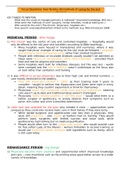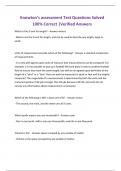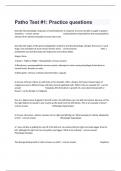Summary
Summary Caring for the Sick Revision - GCSE History Medicine Through Time
Revision document produced by a Grade 9 student, focusing on how far and why methods of caring for the sick changed through time. The information is divided into periods (Medieval, Renaissance, 1700s+1800s and Modern) and structured into individual points, so that it can be used to answer both 12-m...
[Show more]







